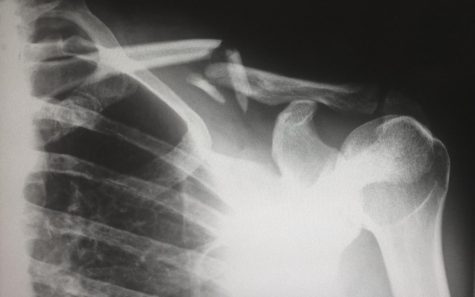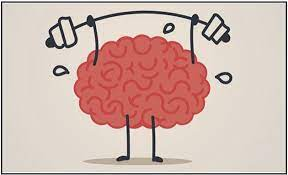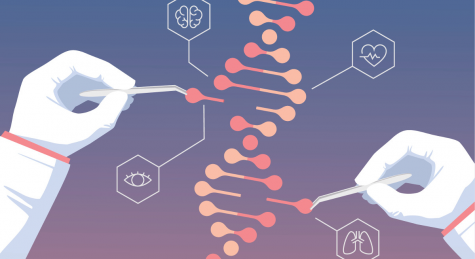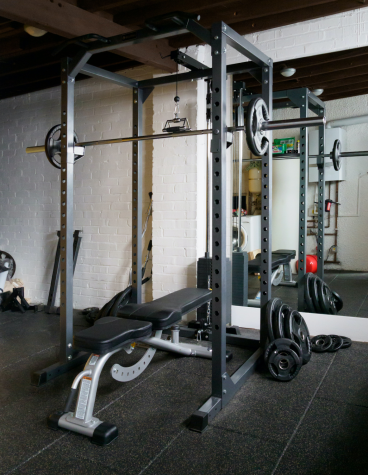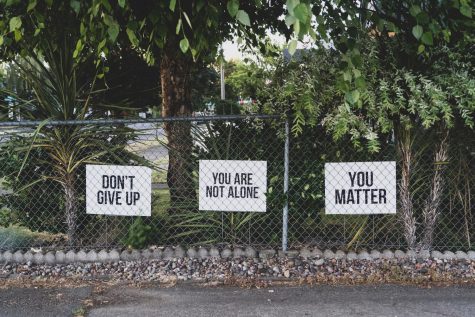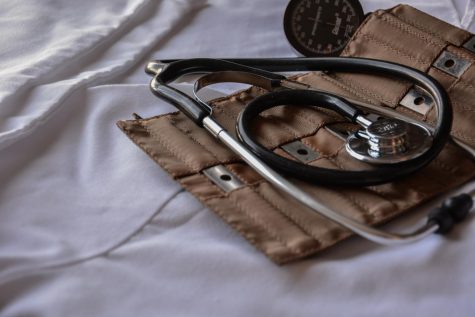Why Don’t We Talk About Mental Health?
Why don’t we, as a country, talk more openly about mental health issues? Although I am only a senior in high school, I have suffered from many mental health issues in my short life, including: PTSD, Depression, Bi-polar, Anxiety, Insomnia, and Overthinking. For years, I kept everything to myself because I didn’t want to be judged or considered different. Ultimately, this secrecy and fear has destroyed me and caused more harm than the mental health issues themselves. I do not want anyone else to suffer the same consequences. We shouldn’t be scared to seek help or talk about our mental illnesses, especially in 2020 when we are facing unprecedented challenges like quarantine, a pandemic, protests, wildfires, and so much more.
The most common issue that people with mental health problems face is isolation. We feel that we are alone even though the data proves otherwise. According to the National Alliance on Mental Illness (NAMI), 1 in 6 youth between the ages of 6 and 17 experience a mental health disorder. This is 6.5% (7.7 million) of our youth. Furthermore, 50.6% of our young people in schools are diagnosed with a mental health illness, and research has found that 50% of all lifetime mental illnesses begin at age 14. As someone who suffers from the stigma that mental health issues carry with them, these statistics changed my perspective. I have truly never been alone; our society just keeps the issues hidden.
Mental health issues manifest themselves in different ways for different people. Some people put on a fake smile during the day and remove the mask at night where they suffer by themselves, fearful of what others may think. Some turn to drugs and alcohol to take away the pain. Others over exercise or stop eating because it’s something they can control. Still others self-harm. I myself have self-harmed and I thought that maybe I was just asking for attention, but deep down I knew that I wasn’t. None of that made sense to me until I read this quote from the Mental Health Foundation: “Remember, self-harm is not a suicide attempt or a cry for attention. It can be a way for some people to cope with overwhelming and distressing thoughts or feelings. Self-harm is serious, whatever the reason.” The most common ways of self- harming is cutting, burning, and taking a non-lethal overdose of certain medications. The Mental Health Foundations shared that most young people reported that they started hurting themselves around the age of 12, and started within what is known as the self-harm cycle. I myself have found myself stuck in the middle of this cycle. In all honesty, right now I am within the temporary relief and shame or grief stage. It’s a difficult cycle to overcome and one that requires help from a professional to see your way out.
There are so many myths linked to self-harm that cause it to be more of a joke to people. However, examining the science linked to these myths shows how false they are and how much they add to the stigma around mental health issues like self-harm.
Breaking-down Myths
- “Self-harm is attention seeking.”
The Mental health institution explains that, “ Many people who self-harm don’t talk to anyone about what they are going through for a long time, and it can be hard to find enough courage to ask for help.” I know that I kept my own cutting issue quiet for a long time because of shame and the fear that people would talk about me.
- “Only girls self-harm.”
In reality, girls are found to perform the more common ways of self-harm like starving themselves and making small cuts; whereas, boys do more of the unexpected and different ways of self-harming. Such as making larger, more noticeable cuts. Men will usually hit or punch themselves (such as hitting a wall or banging their head on a hard surface). I’ve seen men get drunk and high to make those happy feelings in your brain take over.
- “People that self-harm must enjoy it.”
The Mental Health Institution stated: “Being depressed has left them [the self-harmers] numb and they want to feel anything to remind them they are alive, even if it hurts. Others have described that the pain is punishment.” In my own personal experience, this is one of the biggest things that I can prove is true because I have self-harmed to feel like I am still alive, that I am in control of my own body. Yes,it is very painful, but doing it shows me that I can still feel afterwards.
- “People that self-harm are suicidal.”
Not all people that self-harm are suicidal. Self-harm can be their coping mechanism. It is their way of surviving, their way of staying alive during their difficult times. Unfortunately, some self-harmers may be suicidal, but it is unfair and untrue to say that they are all looking to end their lives. I have found myself feeling both ways. Sometimes when I self harm, it is because I have numbed myself so that I don’t have to feel the pain of my past trauma. Other times, though, when my depression really sinks in, I do have thoughts about leaving this life because I feel worthless and like I don’t matter to anyone. It seems an easier route than dealing with the pain of those feelings. However, I have learned to keep quotes and pictures of my nieces and nephew on my mirror so when I feel this way I can look at my mirror and know that I am worth something to someone. Having someone to rely on, someone that makes you feel special is very important.The tears that accompany these emotions seem so absurd when my insides feel hollow.
When people think of mental health disorders, their minds seem to go straight to suicide and the reasons around why people choose to end their lives. Sadly, suicide is the 10th leading cause of death in the United States, it is also the 2nd leading cause of death among people aged 10 to 34. This is mind-blowing. The American Foundation for Suicide Prevention shares that 17.2% of high school students have had thoughts of suicide, and that 47.7% of the LGBTQ+ community in high school have also had thoughts of suicide. In terms of mental illness, 90% of suicide deaths had shown signs of a mental illness while 46% of suicides had been diagnosed with a mental illness. In 2018, 1.4 million Americans attempted suicide and 48,344 died of suicide. In 2018 there was an age adjusted suicide rate survey taken. Suicide rates for teens where: 14.45 /100,000 individuals. On a daily basis there were about 132 suicides/day, 50.57% of these suicides were with a firearm in 2018. Males died of suicide 3.56 times more often than females, meanwhile females attempted suicide 1.5x more often than males. Black students reported to have the highest attempt rates which is about 9.8% of black students. Looking at these statistics, it seems clear that younger and middle aged people are the ones that have the hardest time dealing with mental health issues. The country needs to spend time focusing on these issues and these groups of people.
Part of the discussion about these issues are the triggers that occur prior to a mental health episode. Knowing the triggers will help with earlier detection and may prevent cases of self-harming and suicide. MentalHelp.net defines that triggers are external events or circumstances that may produce very uncomfortable emotional or psychiatric symptoms, such as anxiety, panic, discouragement, despair, or negative self-talk within us. Some triggers that have been reported by young people are home difficulties, arguments and/or problems with their friends, school pressures, bullying, depression, anxiety, low self-esteem, transitions and changes (such as moving, changing schools, parents divorce, ect.), and, lastly, alcohol and drug use. For me, I have been triggered by being bullied, having low self-esteem,feeling school pressures, and from being raped. Triggers will occur randomly or in severe cases of trauma; however, they lead to the same impact: self-harm, depression, or suicidal thoughts. Stopping the triggers will help prevent many of the problems associated with mental health issues.
Again I ask: Why don’t we talk about mental health illnesses? So many people suffer from these issues and many of them silently. The statistics show the need for them to be discussed and fixed/helped. Some of you may not have ever dealt with a mental health issue, but someone around you has or is. As a society, we need to be better. We need to help those who are suffering. By doing so, we are also improving our future as a country, improving insurance rates, decreasing mental institution and prison populations, and ensuring that our citizens are happy and healthy. Instead, we wait until a person kills his or herself and then society says, “Oh, why did they have to do that? They were so loved. We will miss them.” Then we find other things and people to blame for what happened. People that self-harm and commit suicide are blamed for being selfish, for instance, but society is never blamed for pushing them too far off the edge. Please take a moment and look at these pictures. The following images are powerful.
They show the difference between what people see when they look at a person with mental health issues and what that person is actually feeling. The only way we can fix this is to fix ourselves. Instead of trying to put someone down because they are different, new, “weird”, reserved, not you, stop and think: how do they feel on the inside? This is the only way we might be able to fix our current situation. You need to drop that rock in the water and start the ripple if you want to see things get better. Let’s start talking about mental health and its illnesses, stop being uncomfortable with these situations. I would rather be uncomfortable than alone, and others do,too. If you are dealing with any of these topics, please I encourage you to seek professional help. If you keep it quiet it will only get worse, raise your voice and stand up with pride. You are human, and all humans need help.
Works Cited
Deep. “An Instagram Challenge Fighting Mental Health Taboos.” Incitasecurity, 3 Feb. 2017, incitasecurity.com/an-instagram-challenge-fighting-mental-health-taboos/.
“Mental Health By the Numbers.” NAMI, www.nami.org/mhstats.
“People Are Using Makeup to Show What Mental Illness Really Looks Like.” Topics, www.sbs.com.au/topics/voices/health/article/2017/05/01/people-are-using-makeup-show-what-mental-illness-really-looks.
“Self-Harm.” Crisis Text Line, www.crisistextline.org/topics/self-harm/#types-of-self-harm-2.
“Suicide Statistics.” American Foundation for Suicide Prevention, 29 July 2020, afsp.org/suicide-statistics/.
“Triggers.” Mental Help Triggers Comments, www.mentalhelp.net/recovery-and-wellness/triggers/.
“The Truth about Self-Harm.” Mental Health Foundation, 10 Aug. 2020, www.mentalhealth.org.uk/publications/truth-about-self-harm.
